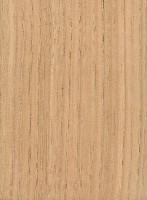 |
Common Name(s): American Chestnut Scientific Name: Castanea dentata Distribution: Eastern United States Tree Size: 100-120 ft (30-37 m) tall, 5-7 ft (1.5-2.0 m) trunk diameter* *Because of the chestnut blight of the early 1900s, very few trees of this size currently exist Average Dried Weight: 30 lbs/ft3 (480 kg/m3) Specific Gravity (Basic, 12% MC): .40, .48 Janka Hardness: 540 lbf (2,400 N) Modulus of Rupture: 8,600 lbf/in2 (59.3 MPa) Elastic Modulus: 1,230,000 lbf/in2 (8.48 GPa) Crushing Strength: 5,320 lbf/in2 (36.7 MPa) Shrinkage: Radial: 3.4%, Tangential: 6.7%, Volumetric: 11.6%, T/R Ratio: 2.0 |
Color/Appearance: Heartwood is a light to medium brown, darkening to a reddish brown with age. Narrow sapwood is well-defined and is pale white to light brown. Wormy Chestnut is also seen, which is chestnut that has been damaged by insects, leaving holes and other discoloration in the wood.
Grain/Texture: Grain is straight to spiral or interlocked. With a coarse, uneven texture.
Endgrain: Ring-porous; 2-4 rows of large, exclusively solitary earlywood pores, numerous small latewood pores in dendritic arrangement; tyloses common; growth rings distinct; rays not visible without lens; apotracheal parenchyma diffuse-in-aggregates (short lines between rays).
Rot Resistance: Rated as very durable, though many trees killed by the chestnut blight of the early 1900s were left standing and eventually were damaged by insects.
Workability: Overall easy to work with both hand and machine tools. Chestnut splits easily, so care must be taken in nailing and screwing the wood. Due to its coarse texture, turning is mediocre. Glues, stains, and finishes well.
Odor: No characteristic odor.
Allergies/Toxicity: Although no adverse health effects have specifically been reported for American Chestnut (Castanea dentata), other types of Chestnut in the Castanea genus (C. sativa and C. mollissima) have been reported to cause skin irritation. See the articles Wood Allergies and Toxicity and Wood Dust Safety for more information.
Pricing/Availability: Because of the blight wiping out nearly all mature American Chestnut trees, its lumber is both rare and (relatively) valuable. Wormy Chestnut in particular is usually salvaged from old barns and other structures, and reprocessed and sold as reclaimed lumber. Prices are likely to be high for a domestic hardwood.
Sustainability: This wood species is not listed in the CITES Appendices or on the IUCN Red List of Threatened Species.
Common Uses: Flooring, rustic furniture, shingles, and reclaimed lumber.
Comments: Caused by an accidentally introduced Asian bark fungus (Cryphonectria parasitica), the chestnut blight of the early 1900s was responsible for killing over three billion chestnut trees. The wood in these standing trees was subsequently damaged by insects, leaving holes and discoloration. The trees were then subsequently harvested and converted into lumber (called Wormy Chestnut). Between the nail holes, discoloration, worm and insect damage, Wormy Chestnut is preferred in applications where a rustic or unpolished appearance is desired.
None available.


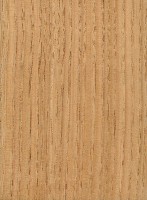
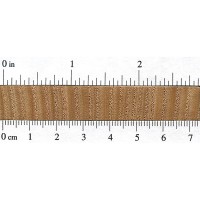
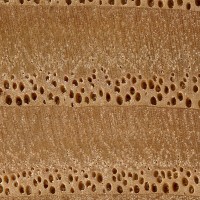
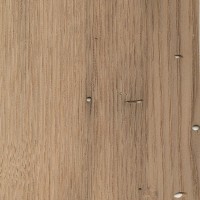
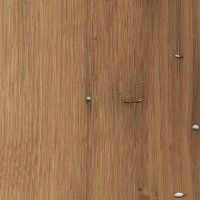



This picture is additions to the one picture I sent earlier this week.
I have 2 pieces on which I’d like your opinion. The first I purchased about 6 months ago from what I consider a reputable dealer. I don’t know where he got it. The second I made from an old mallet head. It’s the burliest piece of wood I’ve ever seen. Thank you. Can I send you more pictures?
My husband purchased these beams. Any idea what they might be?
Was told this was chestnut. House was built in early 1800s. What do you think? Thank you.
Doesn’t look like chestnut. Chestnut is a ring porous hardwood, meaning that the pores (tiny holes) for the annual growth rings of the wood. I don’t see any earlywood pores at all on your piece. Instead, the annual growth rings appear to be a gradation between dense/light wood, which indicates a softwood. https://www.wood-database.com/wood-articles/softwood-anatomy/
Based on the pics, I’m pretty sure that is pine.
Having a hard time with this one, but the grain looks like Chestnut, but this wood is reddish, any thoughts? Just sanded.
Hard to tell from the pics but my guess would be cherry based on the grain, color and sapwood.
Trying to identify this piece of wood. It’s very dence and light in weight
I had posted this bf but not sure you received it. Sorry if its a duplicate. Trying to see if this is American Chestnut or oak. The burrs sure look like chestnut to me but it is possible the burrs were raked up and placed in the pile of the logs that were dumped. Found the log pile and burrs at my local firewood guy.
I will only really comment on the wood, and it appears to be oak and not chestnut due to the conspicuous rays. Only oak would have those lines (rays) radiating out from the center of the log like that.
Without doubt the burrs and nuts are chestnut. Moreover it grew near another living chestnut as the nuts are fertilized. They produce a shriveled nut otherwise. The bark is also about right as is the grain and color of the wood.
That is Oak, Chestnut has no rays.
Wormy chestnut? Inner walls of 1908 farmhouse.
TIA
A reasonable guess based on the facegrain, but it looks like oak. Chestnut does not have those wide rays seen on the endgrain, and is basically THE best way (in addition to weight) of telling chestnut apart from oak.
I do believe you’re right. Using the Chestnut oak info in this database, looks like I found a match. So I was halfway right!
Darker image is from the db. Mine is on the right.
Thanks for your help!
Just because it has “chestnut” in its name doesn’t make it any more likely that it will be confused with America chestnut. It’s generally not possible to ID most oaks down to a species level.
I guess I could understand that. All I was saying is that I based my guess of Chestnut oak upon the database end grain picture. It most closely matches my unsealed sample.
I can’t say for sure in the sealed picture if it’s just finish in the pores, or if those are really tyloses in the pores, but if they are tyloses, then that would indicate a species of white oak. Beyond the rudimentary division between red and white oaks (for oaks in the United States and Canada), it’s pretty tough to get a more specific ID. This page has more info: https://www.wood-database.com/wood-articles/distinguishing-red-oak-from-white-oak/
Definitely tylosis in the pores, so white it is. Knowing that will give me a much better idea of how to use the few boards I’ve reclaimed. Lots of the same in beams and more in our old tobacco barn.
Really appreciate your feedback, Eric. Most helpful!
Put your book my Amazon wishlist.
Thanks again.
Trying to find more about the wood in my 1920, Maryland home. Seems a bit late for chestnut given the blight but I’m not sure. My first thought was fir.
It looks like a softwood of some sort (fir is one possibility). And that has got to be some of the tightest, closest grain I’ve ever seen in flooring! Those were definitely some very old/mature trees that produced that lumber.
We bought a house in Tennessee and someone who had partially stripped this door told us it is American chestnut. What do you think? Thanks for the great article.
It doesn’t look like chestnut to me; most likely an old growth softwood of some sort.
thanks for confirming my suspicion.
My husband and I bought a house in Texas that was built in 1905. We were told that the wood in the house is unique and they don’t know if that means wood imported from Europe or some other rare type of wood. I tried to get some photos but there is a dark varnish on the wood in some places but I was hoping some could tell me what it is? I am a complete novice but it had certain characteristics I thought to American Chestnut pre blight so not wormy but then again I am a total novice.… Read more »
I’m not sure on the endgrain in that first picture, but the 3 remaining ones appear to be an old growth softwood of some sort, so not chestnut. Possibly could be a species of southern yellow pine.
Could the flooring be Longleaf Pine or are you more inclined that is southern Yellow pine? I did try to make a dent with my fingernail in the flooring and was unable to make a mark so that’s why I thought it might not be a softwood. The entire house has boards on the walls and I was easily able to make a dent with my fingernails in those boards.
Longleaf pine is considered one of the species in the southern yellow pine group, so… yes. I don’t know of any way to ID most pine down to a species level.
10 years ago,I purchased a home in Central New York that dates back to the late 1700’s. A section of the house has American Chestnut flooring. Are the boards valuable?
Not from central New York they aren’t. There are virtually none left at all. Any tht are left should be protected. You can get white ash and stain it if it is slower grown. Black locust also can work as well. The more quarter sawn the better.
They do sell boards sawn from old reclaimed beams but they are usually wormy and cost around $20 a board foot!
I have a timber from an old barn in the northeastern US. I am curious if it is american chestnut. I calculated the specific gravity of this piece to be 32.75lb/ft^3.
That sure looks like chestnut to me.
I am not familiar with american chestnut, but I am with European chestnut and i’m almost certain that you are correct.
My husband is refinishing a 100 plus year old table for a friend. We normally can tell what kind of wood they are made of but this table has us wondering if it is Chestnut as we have not seen furniture made of it before. when we got it, it was really dark so he has been stripping and sanding. The pictures is what it looks like now. Obviously still not done. Looking for some feedback.
I don’t think it’s chestnut. It’s hard to tell from the pictures, but it appears the top is made from some decently thick veneer instead of solid wood. Again, can’t tell for sure, but if the top is veneer, you’ll have to be careful not to sand through the veneer layer as you’re refinishing it. Sorry I can’t be of more help with ID.
It was very common for this style of table and done in a reddish finish to be built out of sweet gum or birch and stained to look like mahogany. I do not believe it is Chestnut.
is this American Chestnut? I got a decent amount of this lumber years ago. At the time I was pretty it was AC looking at the standing tree.
No, that looks a lot like hard maple to me, or at least some species of maple. IME hard maple is more commonly that pure pale color than the soft maples.
It could be HM, but I have tapped (for maple syrup) for 35 years and am pretty familiar with them. There is no doubt that this is a pretty hard wood. I see that American Chestnut is about 600 vs HM which is 1400+ (janka). So it most likely isn’t AC. Your time is appreciated!
This looks very much like Cherry.
It’s not cherry, I have lots of cherry and this is substantially lighter in colour.
Followup, images of log, lumber and bur from prev post in here:
https://forestryforum.com/board/index.php?topic=120932.0
Do you ever find mineral stain in A. chestnut like happens in water/laurel oak? A member has sawn a log he feels is chestnut, it was a lone tree with lots of burs on the ground containing 3 nuts. But full of mineral stain, the sapwood is not stained, so it didn’t lay on the ground to get stained.
Any idea if this is American Chestnut? It still attached to the old farmhouse that I have dated to have been built around 1914.
Well, it at least appears to be a ring porous hardwood, so chestnut is still a possibility. But the surface is a bit too weathered to make out sufficient detail for a good ID. If you were able to get a freshly-sawn endgrain surface, that might shed more light.
hi all
would you venture to guess the wood?
100cm x45 cm, in Sweden, bit doesn’t look traditional Swedish.
many thanks for any suggestions
Trying to ID a dead standing tree in southeast CT that I’m planning to mill soon. I’m 99% sure that it’s chestnut from the end grain, and the fact that there are many younger chestnut trees growing around it. Discerning whether it’s American or European chestnut is where I’m stumped. Seems unlikely that American would have gotten to the size of this tree (34” diameter at chest height) which can’t be more than 25 years dead. It’s completely debarked, but the wood is still very solid. The Sibley Tree Guide does note that European chestnut has escaped cultivation in this… Read more »
Do you see those intermittent thick white vertical lines radiating out throughout the piece? Those are rays, and rays of that size are known as aggregate rays, and they’re used as one of the main ways to tell oak apart from chestnut. Looks like you’ve got a species of red oak to me.
Thank you Eric. That agrees what what a local wood-savvy friend suggested: scarlet oak. I was excited for chestnut, but at least I’ll get to work with an oak species that’s new to me.
This looks like chestnut. Untreated and stored on right, sanded and sealed on left
PS. The woodworker didn’t have any idea of what kind of wood it is. It’s pretty hard, lightweight. Whatever it is, I think it’s beautiful.
I got this old mirror years ago, and I have always wondered at the wood. I have come to think it may be chestnut. I recently had it repaired (it split on a corner) and refinished. What do you think?
Hi, Eric. Hoping you can help with idenfication on this hardwood flooring. We’ve had differing opinions with varying degrees of confidence from local flooring specialist. Thanks.
Definitely looks like a type of oak.
Actually, that looks like Tanoak (not Oak) Notholithocarpus densiflorus. Range of central California up through southern Oregon. It is HEAVILY rayed like that. I use it to manufacture the barrel portion of our baseball bats.
Hi Eric just wondering if you might be able to help me? Do you think this might be an American chestnut? Thank you
Endgrain/pic is too rough to tell 100%, but it’s a strong possibility. Is the wood fairly lightweight?
Sorry wrong pics
Looks like some nice old growth softwood species. Possibly hard pine or Douglas fir.
Hi Eric sorry to bother you again but would you have any idea with this type of lumber might be? Thank you again
Can’t tell from those pics, sorry.
Thank you for all your help!
Hi I’m pretty sure that this is American chestnut? I’m hoping I am right? Thank you
Any idea on the weight of these boards? It does look like chestnut, but I can’t say for certain with that rough endgrain shot. Keep in mind that chestnut is a pretty light and soft wood.
Not sure if the other post went through. But thank you for all your help Eric I really appreciate it! The wood isn’t heavy or really light either
Sure looks like Chestnut.
The lumber does look like it has some wormy holes in it
I enjoy working with American Chestnut it works and finishes easily and has a distinct appearance. Unfortunately it’s hard to come by. I just finished turning some pens from a supply I had from my 200 year old log cabin. I had fenceposts around the farm that I pulled up and used as well. My favorite was an old creek crossing timber that I removed from the muck when I installed pipe in the crossing. It was almost black from soaking up the minerals in the mud but dried out and turned very well. Amazing material and in my opinion… Read more »
Once while working in the Shenandoah valley area in Virginia, I happened across a pile of discarded American Chestnuts pods along a local road. I grabbed up a pile of them, then later stuck the individual nuts in putting soil. Many germinated. When they were a couple inches tall I set them outside for sun. Dang squirrel yanked most out! But of the couple that survived, I managed for one to take good footing in my yard. Now, several years later it stands about 12ft tall, just as broad, and about 4-6″ at the base of the trunk and appears… Read more »
It will likely need a mate tree, since they have male and female flowers on one tree but they rarely self pollinate.
The American Chestnut Foundation, https://www.acf.org, is continuously looking for surviving American Chestnut trees in hopes of finding blight resistant varieties. They have a tree locator and leaf & twig sample forms. There is a chance you may have found one of them. Specially, the one still putting out pods. From what I read, the blight gets them before they get to pod making age.
I have a house that is 232 years old, during renovations my husband discovered that it was built with chesnut. The flooring in the attic space had numerous planks of chesnut that we utilized and made kitchen cabinet doors and base board trim in various other rooms. Making this house definitely one of a kind, and understanding why there has been no termites, carpenter ants or rot with destruction.
I’m trying to find a highly porous, or more importantly absorbent wood for a project. Would this wood be good? In particular I would like to find a wood that can absorb wax if at all possible, and so I’ve been thinking that porous and large pours are probably necessities.
Unless you have an easy source for chestnut, I’d think there would be more readily available species, as chestnut blight has all but decimated chestnut trees here in the US. If you’re looking for large pores, woods like oak or ash are readily available. Otherwise, if it’s just a matter of absorbing stuff regardless of hardness or strength, I’d think a softwood (technically pore-less, but very “thirsty”) such as white pine or fir would also work. But what takes the cake for sucking up dyes and other finishes is a wood from Africa called obeche. https://www.wood-database.com/obeche/
I have a huge American chestnut that needs to come out and I’m trying to figure out how much it would be worth and how I can find a buyer. I have no idea where to start. Any ideas?
If you have a large tree then it is resistant to the Chestnut blight. Consider contacting the American Chestnut Foundation and have them collect and start some seedlings from your tree: https://www.acf.org/ before cutting it down.
I just had someone give me some chestnut that was near a structure..it was cut down already and posted for firewood..some of the log sections had small little living branches. Can I put those in something and start saplings ?
Yard trees are worthless because they figure that owners nail nails and other metal objects into it.
To a mill perhaps, but someone with a portable mill such as myself I’d be willing to risk a busted or damaged blade for something as rare as chestnut
You don’t know what your talking about when it comes to Chestnut. People spend big money to buy Chestnut reclaimed from old barns, houses,etc… People will pay big money for Chestnut. As far as sawing it they have a thing called a metal detector and most people that harvest trees and those who run sawmills own one
If you have a tree full of nails, or potentially with nails, spikes or whatever in, you’ll usually get stuck with an agreement with the sawyer to pay for any broken blades. Metal detectors find big stuff, and surface stuff, but not everything. My neighborhood has tall clear stands of oaks, maples, cherry trees and I’ve never seen a single salvage log get hauled away. they are either bucked for home owners to turn into firewood, or literally bucked and split and ground (and labor charged to do it) in a trailer grinder. Reclaimed wood is handled by specialists who… Read more »